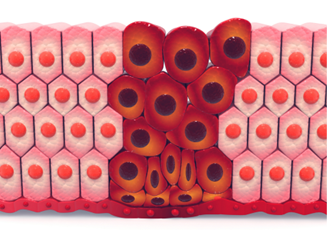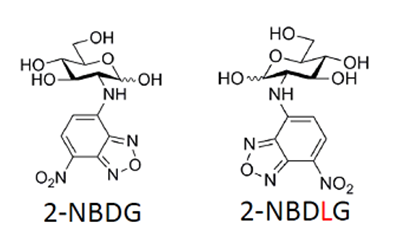Fluorescent Probes (Cancer)
Detection of cancer cells and cancer-related factors is important for checking the development and progression of cancer and the effects of treatment. As cancer cells are known to have different uptake abilities of specific substances and metabolic activities compared with ordinary cells, attempts have been made to detect cancer cells by utilizing these differences. Fujifilm Wako provides fluorescent probes related to cancer.
More Information
Fluorescent Probes Utilizing the Properties of Cancer Cells

Specific detection of cancer cells and cancer marker molecules is important for early detection and treatment of cancer. Although cancer cells arise from normal cells, they have different properties compared with normal counterparts. Fluorescent probes for cancer cells make use of these differences to enable visualization of cancer cells and cancer marker molecules. A property of cancer cells and examples of probes that use it are described below.
Glucose Metabolism
One of the characteristics of cancer cells is that they actively utilize the glycolytic pathway to produce energy, rather than oxidative phosphorylation in mitochondria, even under aerobic conditions (Warburg effect). As energy production efficiency of the glycolytic pathway is lower than that of the oxidative phosphorylation, cancer cells consume more glucose than normal cells.
Positron emission tomography (PET) scanning with 18F- Fluorodeoxyglucose (FDG) utilizes this property for imaging cancers. 18F-FDG, a derivative of glucose in which the hydroxyl group at the 2-position is replaced by 18F, remains in cells without being metabolized when taken up by the cells. As cancer cells take up more glucose than normal cells due to the Warburg effect, the presence or absence of cancer cells can be determined by examining the distribution of 18F-FDG on PET scans. However, some problems exist; for example, the S/N ratio is low because normal cells also take up glucose, fasting is needed before examination, and inflammatory cells tend to accumulate 18F-FDG and in some cases are difficult to distinguish from cancer cells.1)

A glucose analogue, 2-NBDG, is also used as a probe to assess glucose uptake, but it still presents similar problems as with 18F-FDG. On the other hand, 2-NBDLG, the enantiomer of 2-NBDLG, has gained attention as a fluorescent probe that can detect cancer cells at a high S/N ratio, because it is rapidly taken up by cancer cells (approximately 15 to 20 minutes) but hardly taken up by normal cells.1)
References
- Yamada, K., Onoe, H., Teshima, T. and Yamamoto, T.: JP6019500
For research use or further manufacturing use only. Not for use in diagnostic procedures.
Product content may differ from the actual image due to minor specification changes etc.
If the revision of product standards and packaging standards has been made, there is a case where the actual product specifications and images are different.
The prices are list prices in Japan.Please contact your local distributor for your retail price in your region.



